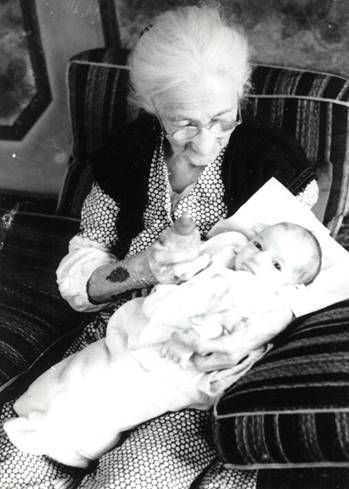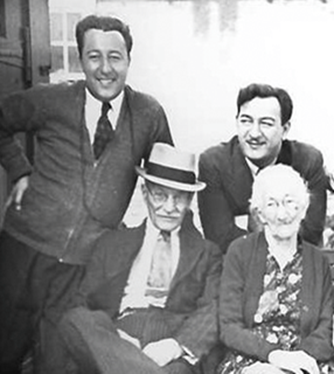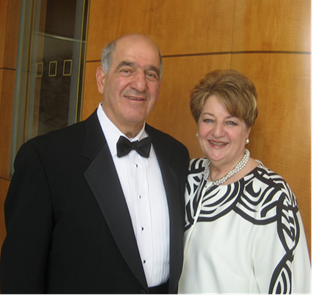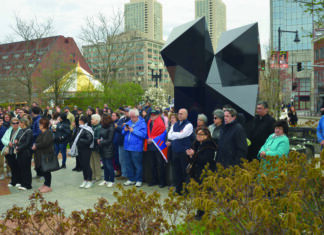WYCKOFF, N.J. — “My paternal great-grandmother Hajimom passed into her eternal rest when I was 8 months old,” says Ruth Bedevian. “Anna Najimian Bakalian is sleeping in Flower Hill Cemetery in North Bergen, New Jersey. Indeed, she is far from her birthplace of Dikranagerd, the ancient city founded by Tigranes the Great, and ruled by Sultan Abdul Hamid II, ruler of the Ottoman Empire at the time of her birth (circa early 1840s). In 1900, my Hajimom arrived at Ellis Island with an identification tag pinned to her coat. Her 12-year-old grandson, Khoren, her newly remarried daughter, Soghome, and son-in-law Shahpaz Shahbazian, were temporarily living in a boarding house in Pawtucket, Rhode Island. The manifest states that her destination was 110 Buffalo Avenue, Paterson, New Jersey. It was the residence of the Najimian family where her brothers had settled. She was born a Najimian; her married surname was Bakalian, but she was entered into the United States records as Najimian.”
“Like many Armenian Genocide survivors, Hajimom neither spoke about nor obsessively lingered on the horrors and pain she suffered when she was violently widowed at a young age. Two Turkish soldiers had entered her home and slaughtered her husband and two sons before her eyes during the Hamidian Massacres (1894-1896) in the southeastern provinces of the Ottoman Empire. Chaos and turmoil prevailed in the household and the surviving spouses and children scattered for refuge,” says Ruth.

“I cannot remember feeling the warmth of her embrace nor the soft kisses upon my forehead since I was very young at the time. Nevertheless, I have felt the blessings of her goodness and love all the days of my life. My earliest memories are stories of Hajimom told to me on the long Sunday afternoon drives when my parents, Karnig and Alice, would delight my brother and me with their narrations. More stories overflowed from uncles, aunts and older cousins to the point of my perfect enthrallment of her ‘sainthood.’ Her moniker derived from being a haji (pilgrim) as evidenced by the blue tattoo that she bore upon her right arm and from being the surrogate mom. The affectionate designation disclosed a natural blend of the Old World from which she came and the New World to which she acclimated. To everyone in our family, she was endearingly addressed as Hajimom.”
Ruth adds, “Our family agrees that the kitchen was always our Dikranagerdtsi Hajimom’s domain and that is where she reigned as a queen. My mother, Alice, whose Roupenian clan hailed from Kharpert, learned to cook many traditional Dikranagerdtsi style foods by watching Hajimom (Kharpert is the Voski Dasht, the Golden Plain, of the Armenian Plateau.) Her ‘dzedzadzs’ is a Shahbazian family tradition and Thanksgiving Day is not complete without a steaming tray of this dish set upon the table. It is a hearty mixture of wheat and seasoned meat, a treasured recipe I have been unable to find in a dozen Armenian cookbooks. It must be a particularly Dikranagerdtsi recipe or truly one of Hajimom’s own special creations.”
“‘Dzedzadzs’ means ‘something beaten’ in Armenian. Hajimom taught my mother how to make this dish when she was a new bride. I am sure she used lamb, but I have always used beef. The beef has to be less lean to give the right taste,” says Ruth.
“One day, my mother was learning how to bake from one of her neighbors. They struck up a friendship and Mrs. Jeffreys would call up to my mother and say, ‘Come on down. I’m baking a cake.’ My mother would experiment with different recipes. One day she taught Hajimom how to bake an American-style cake. Curious to experiment and learn, Hajimom simply mixed two eggs with milk, sugar, and flour in a bowl and poured the batter into an enamel pan. The edges curled and burned. Her hands trembled from old age and she did not see well, but she baked the delicious cake and everyone ate it.”












